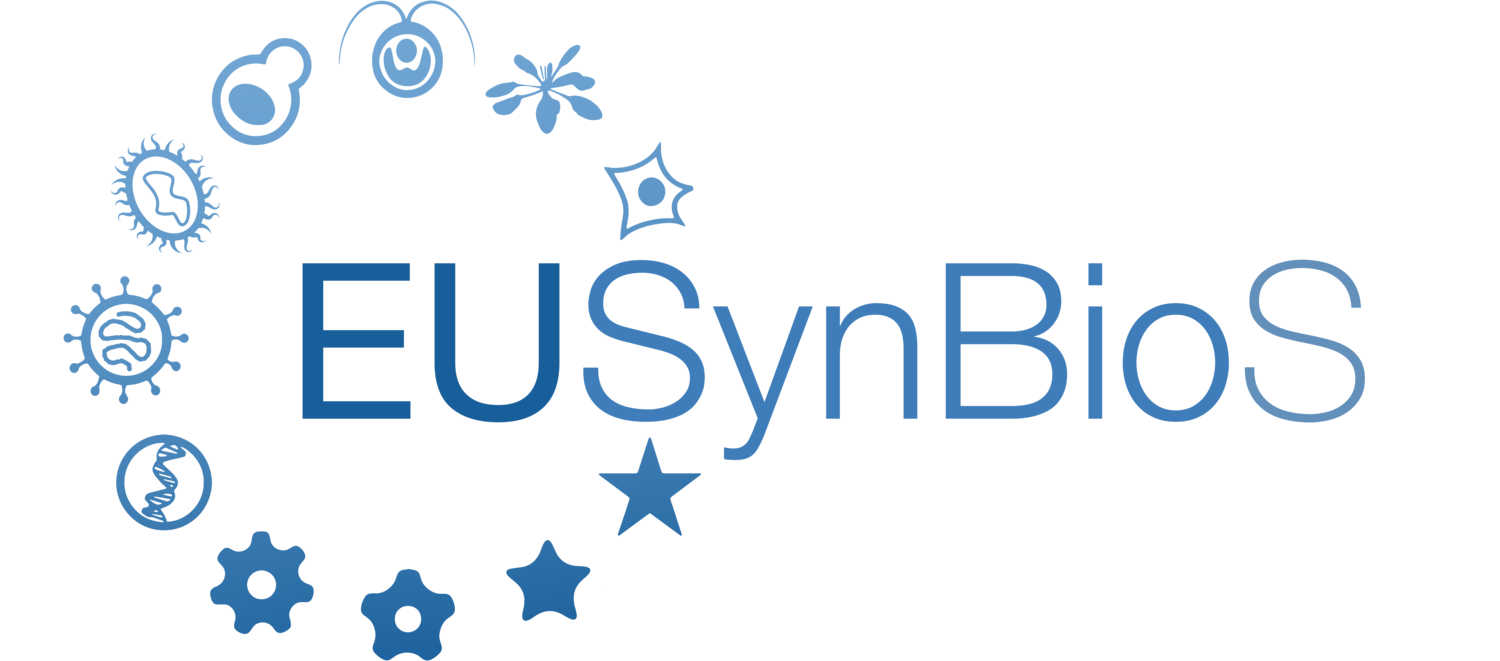EUSynBioS Symposium 2019 & Biomania Scientific Student Meeting
The fourth EUSynBioS Symposium was held this year together with the Biomania Student Scientific Meeting from the 30th of September to the 1st of October in Brno, Czech Republic. Young European researchers from synthetic biology and biomedicine came together to present and discuss recent advances in their fields during two exciting days inside the sleek and futuristic facilities of the Brno Observatory and Planetarium.
The first day was dedicated to biomedicine and biotechnology, and kicked off with an introduction by Pavel Dvořák. Pavel, a former member of the EUSynBioS Steering Committee and currently PI at Masaryk University Brno, chaired the conference on behalf of Biomania, an organization in Brno with the goal to bring students from various branches of natural sciences and biomedicine together. As such, it was a great opportunity for EUSynBioS to join hands with a closely connected and similar-minded organization and introduce synthetic biology to a young new audience. Throughout the day, many researchers presented their work and proved that the Czech Republic in general and Brno in particular are an emerging engine for biomedicine and biotechnology in Europe. Marek Mráz from Masaryk University gave a keynote lecture on the regulation of B-cell receptor signaling in B-cell leukemias, and Lenka Bešše from the Kantonsspital St. Gallen gave a lecture on drug resistance and drug repurposing in multiple myeloma.
On the second day of the joint event, EUSynBioS took over from Biomania. Cléa Lachaux, the EUSynBioS Academic Communication Officer, introduced the organization with a short presentation and announced the recently acquired legal status (as of August 2019, EUSynBioS is a registered non-profit organization based in Paris. Read more here). She was closely followed by Louise Horsfall, senior lecturer in biotechnology at the University of Edinburgh, with her keynote lecture on the biological up-cycling of metals. Having a circular economy in mind, her work represents an essential step towards a more sustainable future with the help of synthetic biology. Nico Claassens from the Max Planck Institute of Molecular Plant Physiology in Potsdam took up the same topic and discussed the role of synthetic biology for sustainability, or more precisely the role of synthetic metabolism, in one of the three break-out sessions of the day.
Break-out sessions, by now an essential building block in EUSynBioS symposia, give the chance to discuss topics in detail while in small groups and on a more informal level, making them an attractive alternative to big talks in crowded halls. A second break-out session was led by Louise Horsfall and Joanna Sadler from the University of St. Andrews. It focused on equality and equity, an often ignored topic that is not necessarily an issue in synthetic biology research alone, but in scientific research in general. The last break-out session aimed to introduce iGEM, the largest synthetic biology competition for students in the world. Nemanja Stijepovic, the European ambassador for the iGEM foundation, presented former Czech iGEM teams and challenged the participants of the session to register their own (and first ever) team from Brno in 2020.
Besides the break-out sessions, the conference allowed many young synthetic biology researchers to present their work on a professional platform, be it with posters and discussions or with their own presentations from a wide range of synthetic biology areas. Eventually, the conference closed with the last keynote lecture by Jakob Schweizer, scientific coordinator of the MaxSynBio initiative at the Max Planck Institute for Dynamics of Complex Technical Systems Magdeburg and member of the German Association for Synthetic Biology (GASB), who offered a refreshing and inspiring comparison between synthetic biology and the architectural school of Bauhaus. According to Schweizer, both fields strive towards minimalism, functionalism and modularization, and as such, parallels and common concepts should be examined with the prospect of mutual understanding and learning from experienced challenges and opportunities.
The academic program was embedded in a stimulating social framework, encompassing traditional food and music from the local Moravian region, a visit to the Mendel Museum, where Mendel originally performed his famous experiments on the heredity of genetic traits with peas in 1865, and a visit to the Villa Tugendhat, one of the most famous examples of Bauhaus architecture in Europe, which is currently celebrating its 100th anniversary. In contrast to previous locations for EUSynBioS symposia, Brno offered the chance to view synthetic biology from a new perspective and at the same time to present synthetic biology in an exciting city at the very center of Europe. It was a great experience and once more a symposium underlining the importance of Europe-wide exchange and cooperation in the field of synthetic biology. We, as EUSynBioS Steering Committee, thank Biomania for the great support and cooperation, the Brno Observatory and Planetarium for hosting us in their facilities, and our sponsors and media partners for their financial support. Above all, we want to thank all participants for their interest and passion and for making a European synthetic biology network reality.




